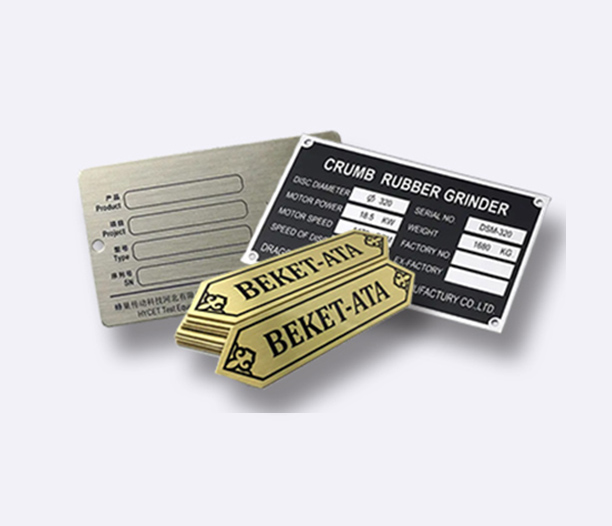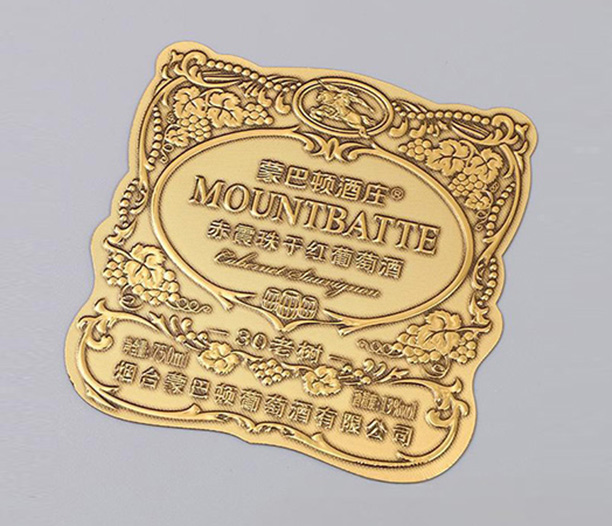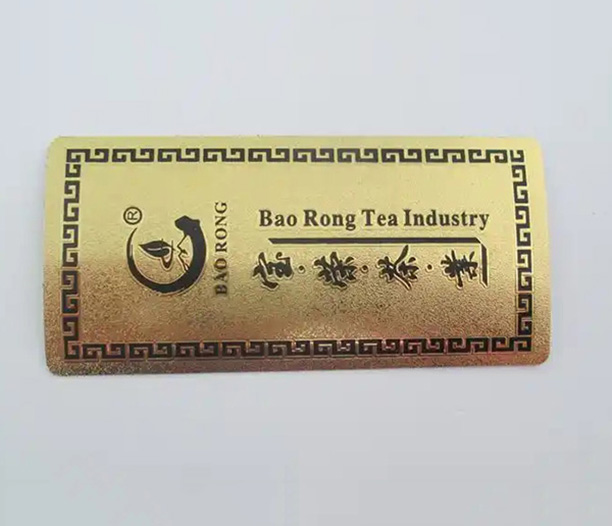From the loyal dog tag around a pet's neck to the robust serial number on industrial machinery, metal identification tags are an integral, though often overlooked, part of our world. These small, durable plates carry critical information, enabling everything from asset tracking and safety compliance to personalization and branding. But what truly goes into these seemingly simple items? This article delves into seven essential aspects that define their functionality, durability, and application.
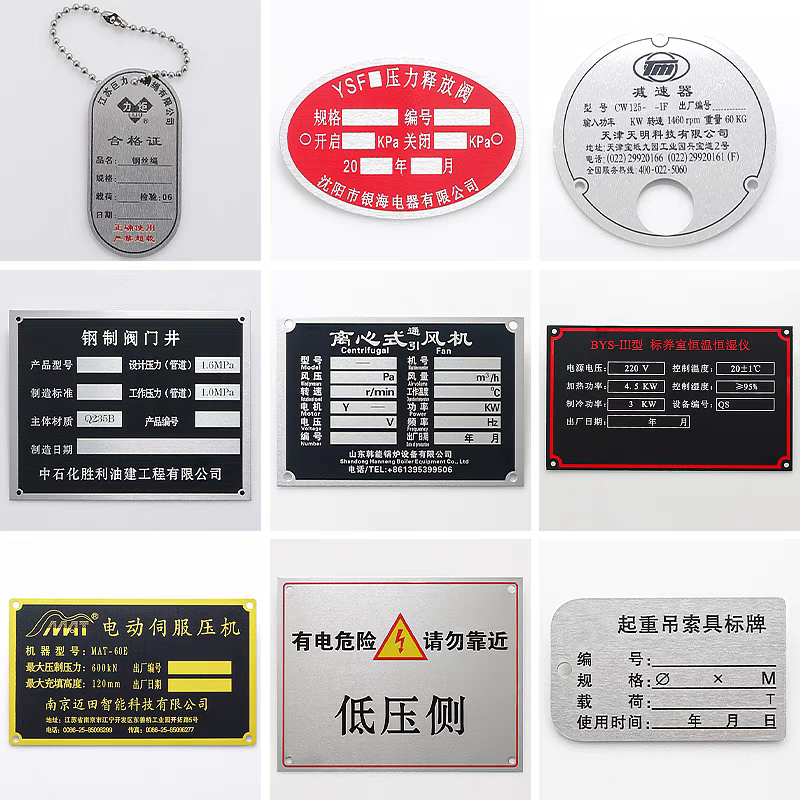
What Exactly Are Metal Identification Tags?
At their core, metal identification tags are permanent markers fabricated from metal materials. They are designed to withstand harsh environments where paper, plastic, or other labels would fail. Their primary purpose is to convey essential information that remains legible for the lifespan of the asset to which they are attached. This information can range from serial numbers, barcodes, and QR codes to logos, safety warnings, and instructional text. The fundamental principle behind their use is the creation of a tamper-resistant, long-lasting data source that facilitates identification, tracking, and maintenance throughout an item's operational life. The effectiveness of any asset management or safety system often hinges on the reliability of these metal identification tags.
The Diverse Materials Used in Manufacturing
Not all metal identification tags are created equal. The choice of material is the first and most critical decision, directly impacting the tag's performance, cost, and suitability for a specific environment.
Stainless Steel: Known for its excellent corrosion resistance and overall strength, stainless steel (often grades 304 or 316) is the go-to choice for demanding applications. It performs exceptionally well in outdoor settings, chemical processing plants, food and beverage industries, and marine environments. These metal identification tags are prized for their durability and longevity.
Aluminum: Lightweight, corrosion-resistant, and highly malleable, aluminum is a versatile and cost-effective option. It accepts finishes and markings very well, making it ideal for decorative nameplates, equipment labels, and indoor asset tags. Anodizing the aluminum surface can further enhance its wear and corrosion resistance while allowing for colored finishes.
Brass and Bronze: These copper alloys offer a distinctive, classic appearance, often associated with prestige and quality. They provide good corrosion resistance and are frequently used for commemorative plaques, architectural signage, and high-end equipment where aesthetics are important. Over time, they can develop a desirable patina.
Nickel Alloys (e.g., Monel): For extreme conditions involving high temperatures, intense corrosion, or marine applications, nickel alloys are the premium choice. These metal identification tags offer superior performance but come at a higher cost, typically reserved for aerospace, chemical, and offshore industries.
Common Marking and Engraving Techniques
The method used to imprint information onto a tag is just as important as the material itself. The technique determines the permanence, clarity, and overall quality of the marking.
Photo Etching: This process uses a chemical etchant to selectively remove metal, creating high-precision, complex designs without compromising the material's integrity. It's perfect for intricate logos, fine text, and tamper-evident patterns on thin metal identification tags.
Stamping: A traditional and robust method where a hardened steel die is pressed into the metal to displace material and form raised characters. Stamped metal identification tags are extremely durable, as the information is part of the metal itself, not just a surface coating. This makes them ideal for serial numbers that must endure severe abrasion.
Laser Engraving: A modern, highly versatile, and computer-controlled process. A laser beam vaporizes the metal's surface to create a permanent mark. It excels at producing sharp, high-contrast marks, including barcodes and QR codes, with incredible speed and accuracy on virtually any metal type.
Embossing: Similar to stamping, embossing creates a raised design on the tag. However, it typically does so from the reverse side, creating a three-dimensional effect. This is often used for serial numbers or logos that need to be easily readable by touch or when covered with paint.
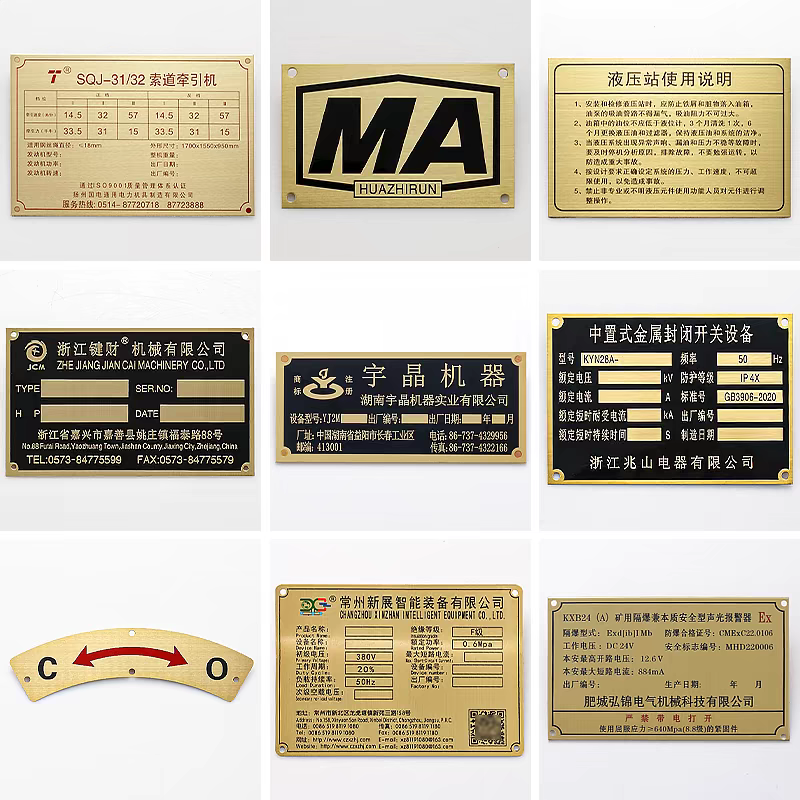
Where Are Metal Identification Tags Applied?
The applications for metal identification tags are virtually limitless, spanning across numerous sectors.
Industrial Manufacturing: They are the backbone of asset management, used to tag machinery, tools, and pipelines with serial numbers, maintenance schedules, and safety warnings.
Aerospace and Defense: In these critical sectors, metal identification tags must withstand extreme temperatures, pressure, and vibration. They are used to identify components, track life cycles, and ensure regulatory compliance.
Electrical and Utility: Panels, transformers, and circuit breakers are marked with metal identification tags to provide crucial voltage warnings, specifications, and identification for maintenance and safety (lockout/tagout procedures).
Petrochemical and Marine: Resisting saltwater, chemicals, and harsh weather is paramount. Tags made from stainless steel or nickel alloys are used to label valves, pipes, and offshore equipment.
Consumer Goods and Branding: From high-end appliances and power tools to pet ID tags, these tags serve as a permanent brand identifier and a source of product information.
Ensuring Longevity: Attachment Methods
A tag is only as secure as its attachment. The method must be selected based on the application's requirements for permanence and security.
Adhesives: High-performance industrial adhesives (like VHB tapes or epoxy) provide a strong, permanent bond for flat surfaces. The choice of adhesive must be compatible with both the tag material and the surface it's applied to.
Mechanical Fasteners: Rivets, screws, and bolts offer the most secure and tamper-resistant attachment. This is the preferred method for heavy machinery, permanent assets, and applications subject to significant vibration or impact.
Welding: For permanent installation on metal structures, especially in high-temperature environments, welding small tabs or the tags themselves is a common practice.
Wires and Chains: For tags that need to be attached to handles, valves, or other non-flat surfaces, attaching them with a stainless steel wire or chain is a practical and versatile solution.
Information Security and Anti-Tamper Features
In many contexts, the information on a metal identification tag is critical and must be protected from alteration or removal. To address this, various security features can be incorporated.
Tamper-Evident Designs: Features like fragile perforations or special etching patterns that break apart if someone attempts to remove the tag, clearly indicating tampering.
Serialized Numbering: Unique, sequential serial numbers make each tag individually identifiable and difficult to replicate, crucial for inventory control and anti-counterfeiting.
Hidden Markings: Some metal identification tags can include covert markings, such as micro-text or UV-reactive elements, that are invisible to the naked eye but can be verified with special tools.
How to Select the Right Metal Identification Tag
Choosing the correct metal identification tag involves a careful assessment of your specific needs. Consider the following factors:
Environment: Will it face chemicals, saltwater, UV exposure, or extreme temperatures?
Durability Requirements: Does it need to resist abrasion, impact, or tampering?
Information Type: Are you marking simple text, a complex logo, or a machine-readable code?
Budget: Material and marking process choices significantly impact cost.
Attachment Surface: What is the material and shape of the surface where the tag will be mounted?
By systematically evaluating these seven aspects, you can specify the optimal metal identification tags that will deliver reliable performance for years to come.
Frequently Asked Questions (FAQs)
Q1: What is the most durable type of metal identification tag?
A1: For overall durability in a wide range of harsh conditions, stainless steel tags, particularly those made from marine-grade 316 stainless, are considered the most robust. When combined with a permanent marking method like stamping or laser engraving and secured with rivets, they offer exceptional resistance to corrosion, abrasion, and impact.
Q2: Can metal identification tags withstand outdoor weather conditions?
A2: Absolutely. This is one of their primary advantages. Materials like aluminum (especially when anodized) and stainless steel are inherently resistant to rust and corrosion caused by rain, snow, and UV exposure. The markings, when etched or stamped, are integral to the metal and will not wash off or fade.
Q3: How is information permanently marked onto these tags?
A3: Information is made permanent through processes that physically alter the metal's surface. Common methods include laser engraving (vaporizing the metal), photo etching (chemically dissolving the metal), and stamping (displacing the metal to form raised characters). These methods ensure the data cannot be rubbed off or removed without destroying the tag.
Q4: Are there any security features to prevent tag tampering or counterfeiting?
A4: Yes, several security features can be integrated. These include tamper-evident patterns that shatter upon removal, sequential serial numbering for tracking and authentication, and the use of specialized materials that are difficult to replicate. Some tags can also include hidden markings like micro-text for verification.
Q5: What is the main advantage of using a metal tag over a plastic or vinyl label?
A5: The key advantage is longevity and durability. Metal identification tags are designed to survive in environments where plastic or vinyl would degrade, melt, peel, or become illegible due to exposure to chemicals, extreme temperatures, physical abrasion, and UV radiation. They provide a permanent, reliable identification solution for the asset's entire service life.



